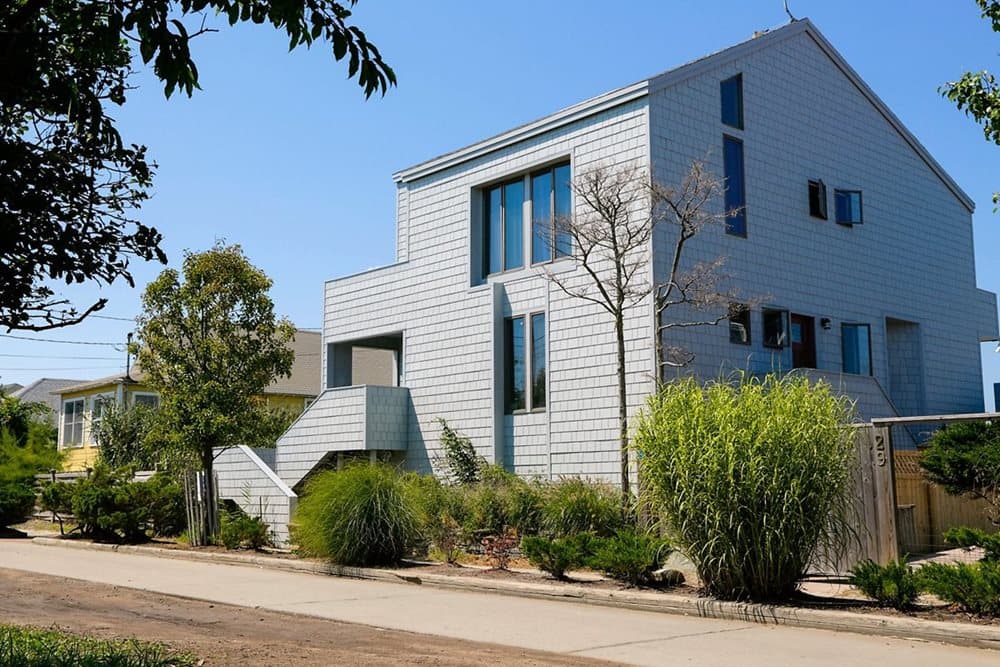Prepare your home exterior for hurricanes now and in the future

Marianne Cusato knows well the devastating effect of natural disasters, having helped rebuild communities in the aftermath of hurricanes and wildfires.
She was in Louisiana after Hurricane Katrina in 2005, and managed projects in 2017 in the Florida Keys following Hurricane Irma and in Sonoma County, California after the wildfires. While she knows there will be more severe weather in the future, she also knows that home design can accommodate it.
“We know that weather is becoming more and more extreme, and that’s why we need to build smarter in places where we know there are going to be problems,” Cusato said.
Cusato is the partner in charge of design and development at Cypress Community Development Corp., a not-for-profit housing organization that specializes in innovative solutions for disaster rebuilding and workforce housing. It is known for its resilient and energy-efficient homes based on Cusato’s cottage designs.
The cottages are the result of Cusato’s two design tenets for rebuilding in a wake of a disaster: look to the future to design homes that will withstand the weather we know is coming; and recognize the past by building homes that fit the character of the local architecture.
“Our home designs are safe, resilient and durable, but they’re also meant to fit in where we build,” said Cusato, who is also on the faculty of the School of Architecture at the University of Notre Dame. “When you look at the cottages that we built in New Orleans, you say, ‘this looks like it belongs in New Orleans.’”
Safe, resilient and durable
Cusato has a triad of elements that go into building homes to withstand future severe weather: safe, resilient and durable.
Safety, in the simplest terms, means that a home will protect the owner. That could be providing shelter through a storm, or withstanding fire long enough for people to escape or give firefighters an edge.
Resilience takes safety to the next level, moving from the mindset of “build back better” to “build better before.” Cusato said she believes in exceeding today’s building codes, since they continue to get stricter to match weather patterns.
The last is durability, which has to do with a home’s overall lasting power because of how it’s built. Cusato urges designers and developers to be smart about the products they choose. For example, she argues that some new sustainable building products look good on paper, but don’t take climate into account.
Choosing the right exterior materials
To achieve designs that will stand up to different climates and risks, and look authentic, Cusato carefully selects building materials. Her cottages in New Orleans, Florida and Sonoma County feature Hardie® products, which offer significant design flexibility and allows her to capture the character of a region.
Cusato also uses these products because they work well in hurricane- and wildfire-prone areas. “You need to make sure that at the core your products are built with your climate in mind,” she said.
In areas with frequent hurricanes, Cusato said exterior materials need to protect against winds, pressure differentials and storm surge, which are just some of the environmental factors that coastal architects need to consider before each project.
Specifically, Hardie® fiber cement products resist the impact of windblown debris, and will not contribute fuel to a fire, like those that sometimes happen during hurricane damage.
In areas with the threat of wildfire, she said it’s imperative that buildings are as fire resistant as possible, which means choosing non-combustible materials for siding and roofs.
The result is houses that are built to withstand more severe weather, and look like they belong.
“Our goal is to build a house that will be there, and not just satisfy a checklist for today,” she said. “We strive to build for a hundred years, if not longer.”
Preparing for a hurricane now
As more architects and homeowners consider how to best protect exteriors from hurricanes, there are also immediate steps to take to help.
Secure your exterior. Trim large tree branches that are close to your home. Bring in patio furniture, potted plants, decorations, and any other items that might be swept away by strong winds.
Protect windows. Installing storm shutters over windows may help protect your home. As a last-minute alternative, you might consider using plywood to cover doors and windows.
Photograph your exterior. This may be useful for insurance purposes if your home is damaged by a storm.
You can get complete hurricane prep resources by visiting ready.gov.